Archive | Population RSS feed for this section
Education, Population, Sanitation
 Health, Information and Communications Technology, Population
Health, Information and Communications Technology, Population
 Economics, Environment, Infrastructure, Population, Poverty, Social development and protection, Urban development
Economics, Environment, Infrastructure, Population, Poverty, Social development and protection, Urban development
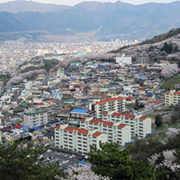 Economics, Education, Environment, Health, Population, Social development and protection, Urban development
Economics, Education, Environment, Health, Population, Social development and protection, Urban development
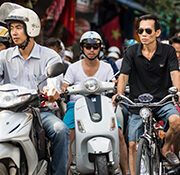 Population, Social development and protection, Urban development
Population, Social development and protection, Urban development
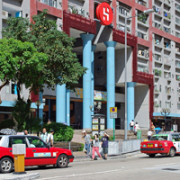 Population
Population
 Population
Population
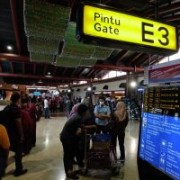 Population
Population
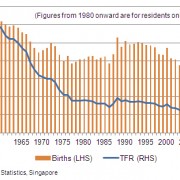
“Theory of change” as a solution to the global sanitation crisis

The most exciting part of my journey here at the Asian Development Bank Institute is that I get to meet inspiring leaders who have contributed immensely to helping solve the pressing challenges related to sustainable development. This time it was an interaction opportunity with the world-renowned “Mr. Toilet”, i.e., Mr. Jack Sim. If it were not for the efforts of Mr. Toilet and the World Toilet Organization (WTO), the United Nations would not have recognized 19 November as World Toilet Day, an effort by the global agency to mainstream the discussion on wastewater.
Piecemeal Policy Approaches to Aging Societies: Can They Be Avoided with Proper Data on Well-Being?

The rapid pace of aging in developed and developing countries, especially in Asia, requires data for informed decision-making to ensure the well-being of aging populations. But for many countries, data for sound policy-making, planning, and investment targeting have not been available. This has led to piecemeal public policies with little sense of priority.
Housing policy in the Republic of Korea

This article evaluates housing policy in the Republic of Korea over the past 5 decades or so, and describes new challenges arising from the changing environment. The most pressing housing problem in the early phase of development of the Republic of Korea was an absolute shortage of housing. The country addressed this problem with the pragmatic approach of engaging the market using government intervention as leverage.
Pointers from Asia for urbanization in Africa

Africa and Asia are latecomers to urbanization. In these two continents, less than half live in urban centers, while elsewhere, more than 70% of people do. But Africa and Asia are now rapidly urbanizing, with Asian cities growing at an average of 1.5% per year and Africa’s at 1.1% per year.
Housing policies for the PRC and Hong Kong, China: One nation, two systems

It has been reiterated that the People’s Republic of China (PRC) and Hong Kong, China are under different economic systems. The PRC is basically socialism with more planned economy features, while Hong Kong, China is basically capitalism with more free market features.
The role of foreign migrant workers in several economic successes in Asia and the Middle East

Seven of the world’s ten richest economies by real gross domestic product (RGDP) per capita are in Asia and the Middle East, and all have sizeable populations of foreign migrant workers (FMWs) that have contributed greatly to growth. The proper handling of FMW involvement in an economy is crucial for continued prosperity. Despite the widespread reliance of many economies on FMWs, much of the related research has focused on the narrower issue of the impact of foreign labor on local employment and the resultant downward pressure on local wages (e.g., Borjas et al. 1996. Goto 1998). In comparison, very little evaluation has been done on the extent of their contribution to economic growth across countries.
Migration matters: the race to ensure a future supply of workers in Asia

While there has been strong promotion of free global trade in goods and services as well as in capital inputs, the case has not been made so forcefully for increasing the international mobility of the other factor of production, labor. A recent article in The Economist, Free Exchange—Border Follies, surveys the latest research on the potential benefits of increasing international labor migration (The Economist 17 November 2012). The estimates are staggering, with possible increases in world output and income ranging from 30% to 100% (amounting to an additional $20 trillion to $70 trillion) depending on the level of migration assumed. These calculations swamp the potential benefits of increasing international trade, which is estimated to be less than 3% of global output. The research shows that the gains come from migration-induced productivity increases in the host country and the additional incomes are more than sufficient to compensate for any adverse effects, for example, if wages for some host country workers fall in the short term. Remittances (worth around $300 billion a year) are also sent to the migrant source countries to compensate those who stay behind.
Singapore’s population conundrum

Singapore’s resident total fertility rate (TFR), or the average number of births a hypothetical woman can expect to have by the end of her childbearing years if she experiences the age-specific rates in a given year, has been well below the replacement level (generally considered to be 2.1) since 1976. Singapore has one of the lowest fertility rates in the world, together with Hong Kong, China; Japan; Republic of Korea; and Taipei,China (United Nations 2009). Our projections (Institute of Policy Studies May 2012) show that if the TFR remains constant at 1.24 births per woman from 2005, Singapore’s citizen and permanent resident population (known collectively as the “resident population”) will decline from 2020. Read more.


Search
Subscribe / Connect to Asia Pathways
Subjects
- Agriculture and natural resources
- Blog
- Capacity development
- Climate change
- Economics
- Education
- Energy
- Environment
- Finance sector development
- Gender
- Governance and public sector management
- Health
- Industry and trade
- Information and Communications Technology
- Infrastructure
- Miscellaneous
- Population
- Poverty
- Private sector development
- Regional cooperation and integration
- Sanitation
- Social development and protection
- Transport
- Uncategorized
- Urban development
- Video Blog
- Water
Recent Posts
- Silent Struggles: Advancing Women’s Mobility with Public Transportation in Asia
- Mind Your Neighbors: Measuring Shrimp Farm Spillovers
- The Knowledge Ecology: The Role of Think Tanks in Global Environmental Governance
- Building a Roadmap for Transition Finance: A Path to Net Zero
- Calling for Quality Infrastructure—Why and How?




Recent Comments